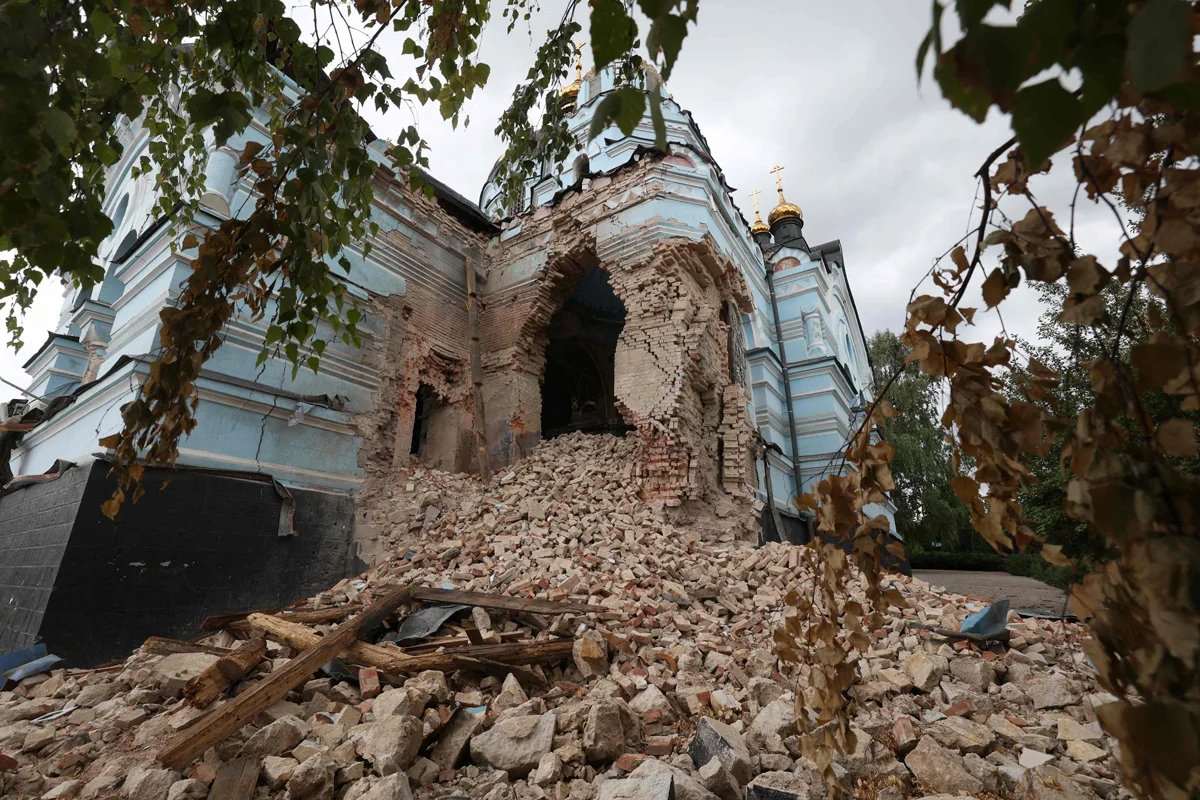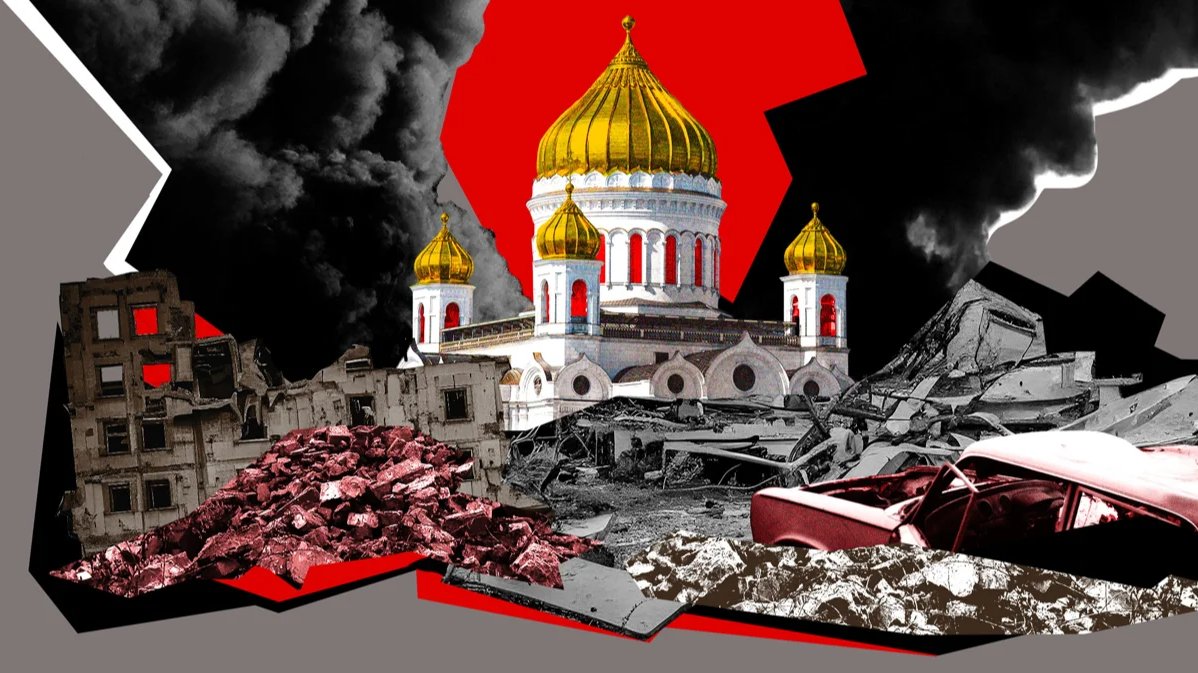The number of religious congregations on Ukrainian territory under Russia occupation has decreased by over half since the start of the war in February 2022, research carried out by Novaya Gazeta Europe has shown.
According to the investigation, which covered the four Russian-occupied regions of Ukraine that have been fully or partially under Russian control since 2022, but did not include Crimea, just 902 of the 1,967 religious congregations that existed before the war now remain.
While this is due in part to the depopulation of the four war-torn regions, the fact that not all faiths have been affected equally by the phenomenon suggests that there are other factors at play. Most affected are Orthodox Christian churches not subject to the authority of the Moscow Patriarchate, the highest body of the Russian Orthodox Church (ROC).
The Russian Orthodox Church (ROC) and the Ukrainian Orthodox Church (UOC) recognise each other and were until recently closely connected. However, in May 2022, the UOC cut all ties with the Moscow Patriarchate in protest at its support for the Russian invasion. According to the ROC charter, the UOC is a “self-governing church with broad autonomy” that is nevertheless part of the ROC.
The Orthodox Church of Ukraine (OCU), established in 2018, is a completely separate institution that has distanced itself as far as possible from the ROC. Created by the merger of several independent Orthodox denominations that were not subordinate to the Moscow Patriarchate, the OCU’s congregation is growing in Ukraine as more and more formerly UOC parishes realign themselves to fall under its authority.
Amid the systematic absorption of its parishes by the ROC, the Ukrainian Orthodox Church (UOC) has decreased in size by 140% in the past three years. The number of Protestant communities has shrunk by 360%, while the Catholic Church has been almost completely wiped out in the occupied territories: just one of 15 Catholic parishes remains, while not a single one of the 49 Ukrainian Greek Catholic Church parishes that existed prior to the occupation still does. Parishes of the partially recognised Orthodox Church of Ukraine (OCU) have also completely disappeared.
In total, the number of religious congregations independent of the ROC’s Moscow Patriarchate has fallen fivefold since 2022.
Russia has continued to target minority religions in eastern Ukraine, just as it has in Russia itself, banning both Jehovah’s Witnesses and the New Generation Protestant Church, both of which have now now ceased their activities in the occupied territories.
In most cases, however, the pressure placed on religious congregations has had no basis in law. For instance, though the Ukrainian Greek Catholic Church is only officially banned in Zaporizhzhia, it has ceased to function in all four of the occupied regions.
These religious purges have seen priests be arrested, abducted, kidnapped and even killed, and have forced some churches to suspend all activity in occupied areas, while others now only meet in secret for the safety of both clergy and parishioners.

The Church of the Nativity of Mary, destroyed by a Russian airstrike, in the Donetsk region, 30 July 2024. Photo: Anatoly Stepanov / AFP / Scanpix / LETA
The church buildings have either been taken over by the ROC or used by the Russian-installed authorities for other purposes. The ROC appropriated a UOC church in the city of Mariupol, for example. Another in the Novoazovsk district of the Donetsk region is now a morgue, while a Protestant church in the city of Melitopol, in the Zaporizhzhia region, is now a concert hall for Russian servicemen.
Nor has pressure only been exerted on denominations deemed to be “hostile” to the ROC. The UOC, which the Moscow Patriarchate deems to be canonically correct, is now completely under Russian control, and all parishes are now officially parishes of the ROC. Its priests are required to demonstrate their loyalty to Moscow by renouncing their Ukrainian identity and promote propaganda.
Many priests unwilling to collaborate with the Russian authorities have left the church, and only half of the parish priests currently serving in areas of Ukraine captured by Russia since 2022 have been in their posts for more than three years, the other half being appointed since the occupation began.
Moscow is also gradually replacing the UOC’s’ most senior clergy. In three out of eight dioceses, Ukrainian church leaders have been replaced with “tried and tested” clergymen from Russia, the research revealed.

